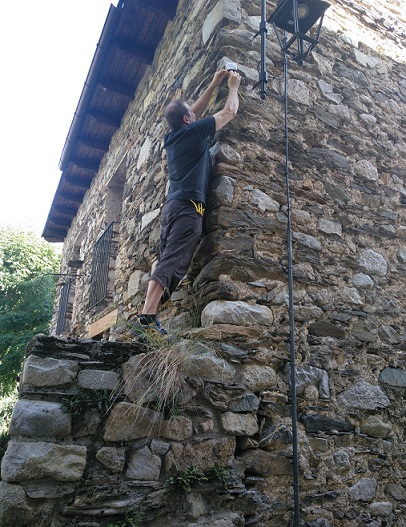23-07-2019
Starlight Project of the Aigüestortes and Estany de Sant Maurici National Park
Photo: Marc López-Roig
Natural light and its diurnal cycle regulates fundamental aspects of physiology, ecology and animal behavior. Night-time artificial illumination has gradually expanded globally with increasing urbanization. Light pollution alters the regimes of natural light and affects the circadian rhythm of activity of daytime and night-time species with significant implications for individual physical condition, sexual selection, reproductive success, predator-prey relationship and competition between spices.
Natural light and its diurnal cycle regulates fundamental aspects of physiology, ecology and animal behavior. Night-time artificial illumination has gradually expanded globally with increasing urbanization. Light pollution alters the regimes of natural light and affects the circadian rhythm of activity of daytime and night-time species with significant implications for individual physical condition, sexual selection, reproductive success, predator-prey relationship and competition between spices.
The Aigüestortes i Estany de Sant Maurici National Park was distinguished with Starlight Tourist Reserve and Destination. It is a protected natural area with an exceptional quality of the dark sky and is an example of protection and conservation that incorporates the observation of the sky as part of its natural, cultural and scientific heritage. In this sense, in the last months there has been a gradual replacement of sodium vapor lamps for low power LEDs in the villages that are part of the National Park's area of influence.
 Photo: Jordi Serra-Cobo
Photo: Jordi Serra-Cobo
 Photo: Jordi Serra-Cobo
Photo: Jordi Serra-CoboThis year a study about the impact of sodium vapor lamps and LED lamps on bats, insects and birds is underway. To do the study, Dr. Jordi Serra-Cobo and Marc López-Roig of the Biodiversity Research Institute (University of Barcelona) have programmed and installed devices that record sounds in the villages of the National Park's area of influence. The aforementioned devices have been placed near the leds and sodium vapor lamps. The first days of study have already generated more than 10,000 sound files. The information is being processed and analyzed by computer. During the summer, the installation of these devices will be repeated in the different municipalities of the National Park. It is expected to have the results in the fall.
